Saturday 10th June
It’s beginning to look as if we are doing a tour of University towns. Tübingen, Heidelberg and in a couple of days Marburg. I get the impression that for a Brit of my age the most famous of German Universities is Heidelberg. In my youth, whenever there was a film featuring Germany, but not about WWII, Heidelberg University seemed to feature, with students wearing funny hats and quaffing steins of beer.
Today was hottest day of our tour so far. 30ºC and humid. Sarah had decided that it was too hot to take Skye into Heidelberg and so I caught the number 26 tram into the town.
I had booked a free walking tour and my first surprise was that it was nearly a mile down Heidelberg’s High Street to arrive at the meeting point. I later found out that the Hauptstraße is 1.8km long and apparently the longest High Street in Europe.
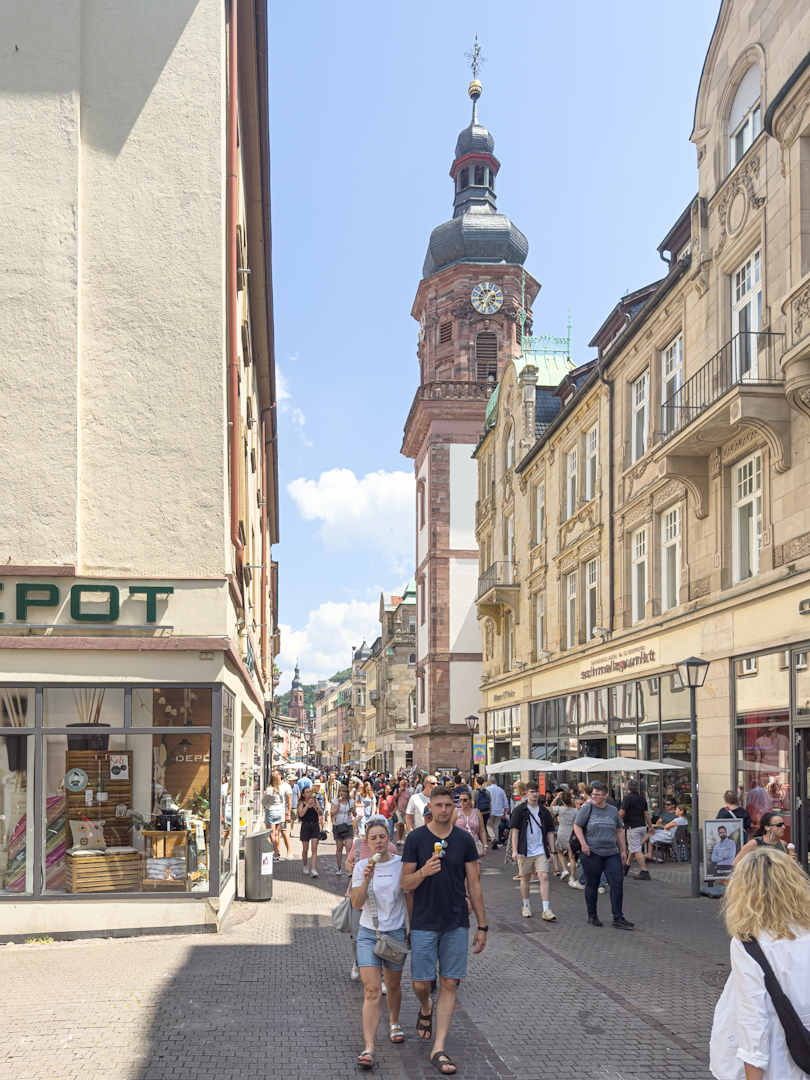
My guide was an American student studying for a Masters at the University. The University is the oldest in Germany, founded in 1386 and still has a strong reputation. The oldest buildings have not survived, because the half timbered houses were prone to fire and during one fire in the 17th Century the whole town was razed the ground, with the exception of the Protestant Cathedral and one stone house, which is now a hotel.
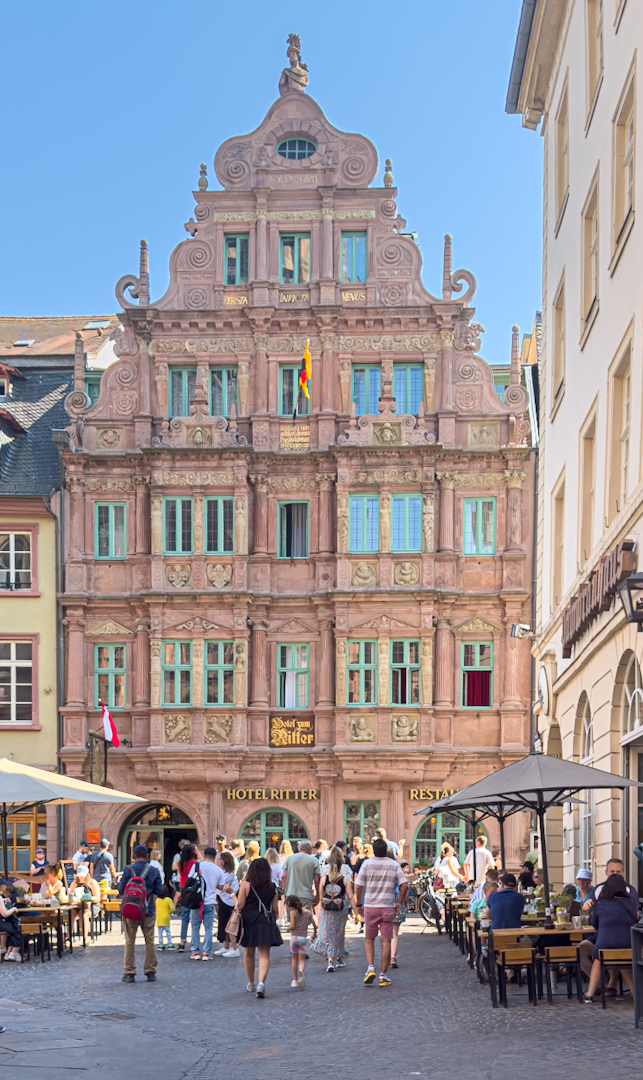
There was a strict set of rules for students to follow in the past and, still standing, is a student prison where offenders could be sentenced up to four weeks, although it was explained this was fairly comfortable imprisonment, with the students allowed out for classes and exams! I also read in my Rough Guide that no self respecting student was graduate without at least one spell in the prison!
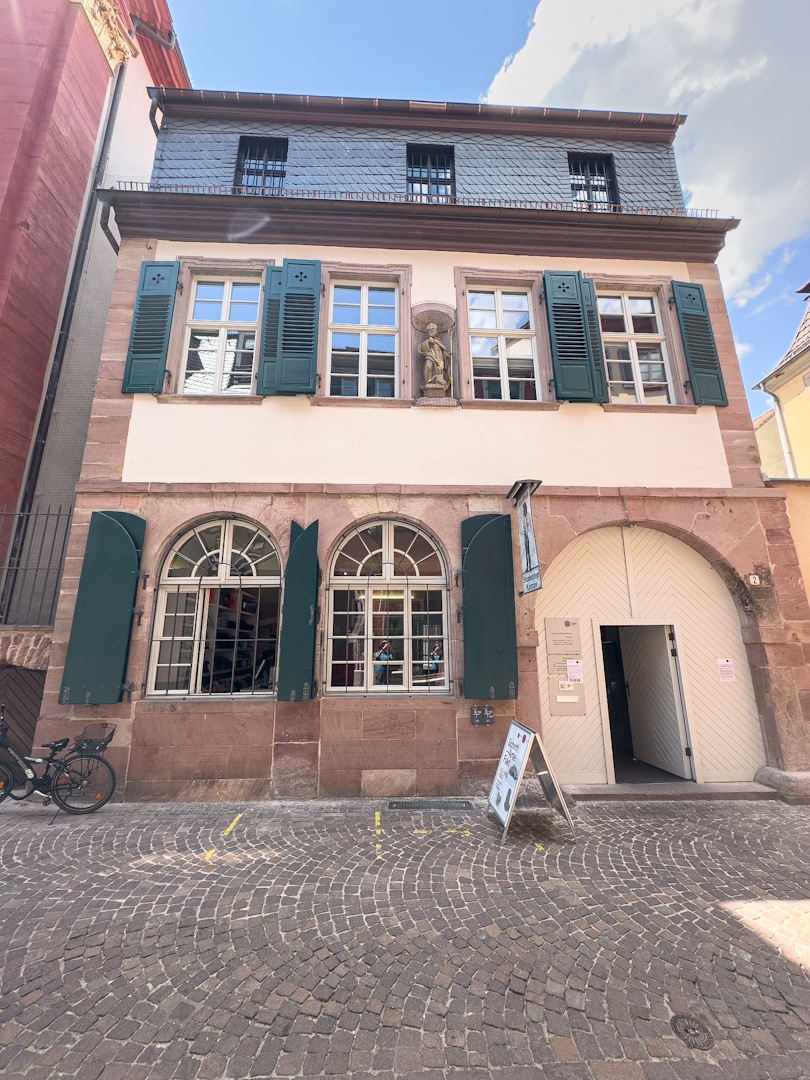
Heidelberg seems to have been the centre of the German Renaissance and the Protestant split from Catholicism. Martin Luther visited shortly after declaring his 95 Theses and Heidelberg and its castle were the centre of several battles during the 30 years war that followed. The original castle was destroyed during this period and the subsequent version still remains as a ruin following repeated attacks by France due to disputes over the Palatinate succession (don’t ask).
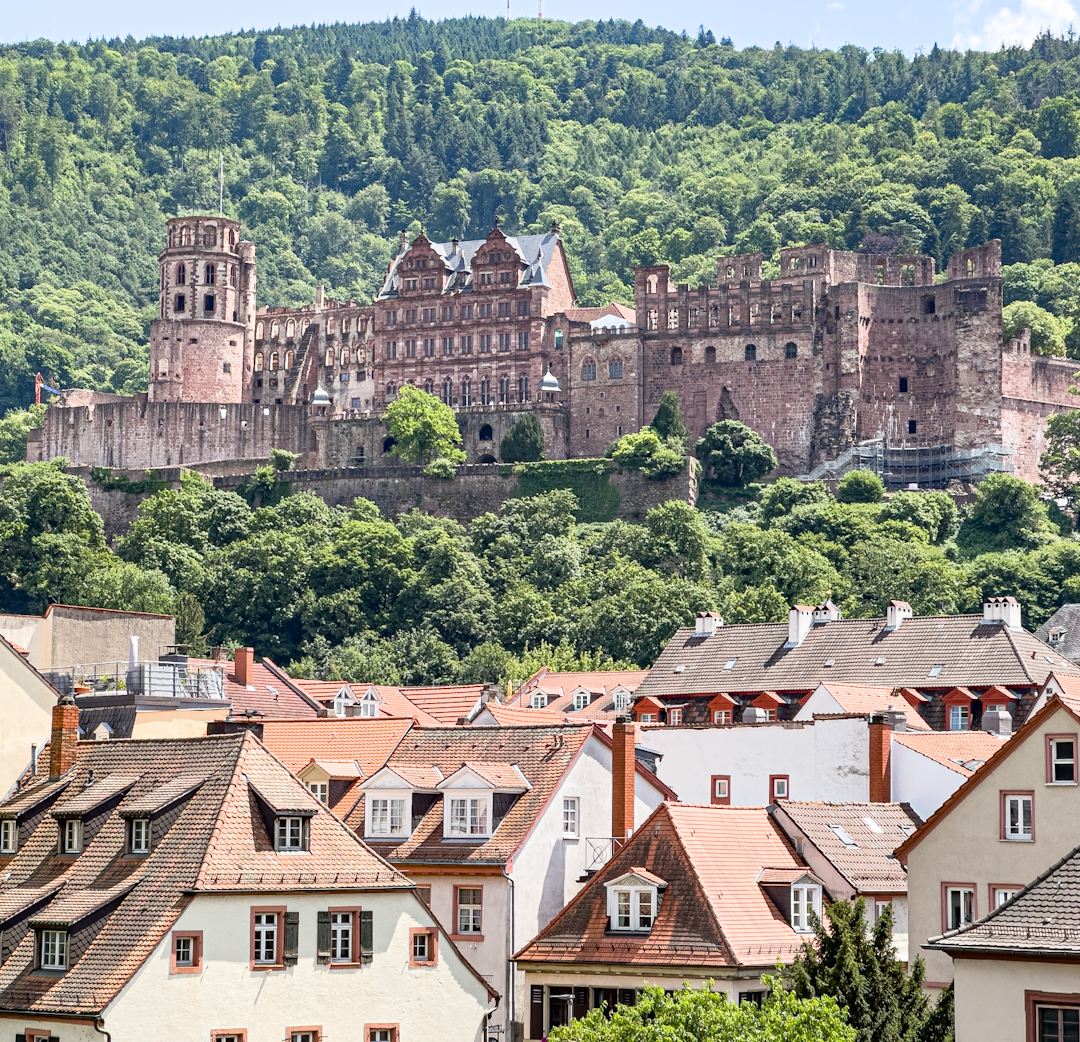
The castle remains became a favourite for the Romantic movement in the early 19th Century with poets and painters. Even JMW Turner visited to paint the castle remains.
On the tour there were plenty of opportunities to discuss the town’s history. One thing surprised me and that was that after the wars of religion and Heidelberg declaring as a Protestant town, there was no particular persecution of Catholics, unlike in Britain, and in fact Catholics worshipped in the Protestant Cathedral until a Catholic Cathedral was built. Rather amusingly the Protestants entered the Cathedral through a plain doorway while the Catholics entered through a highly embellished one!
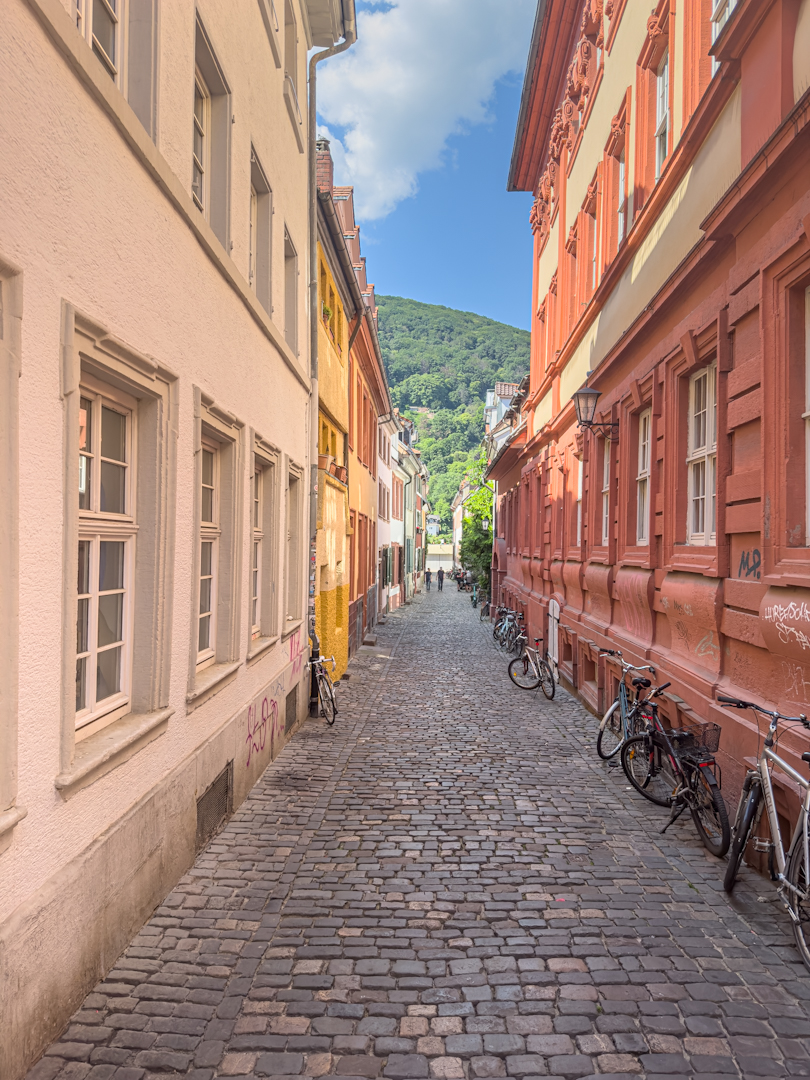
I asked the tour guide and a German student on the tour, whether drinking was still a big part of University life in Heidelberg and they confirmed it was. In fact our American guide said it was too much for him!
